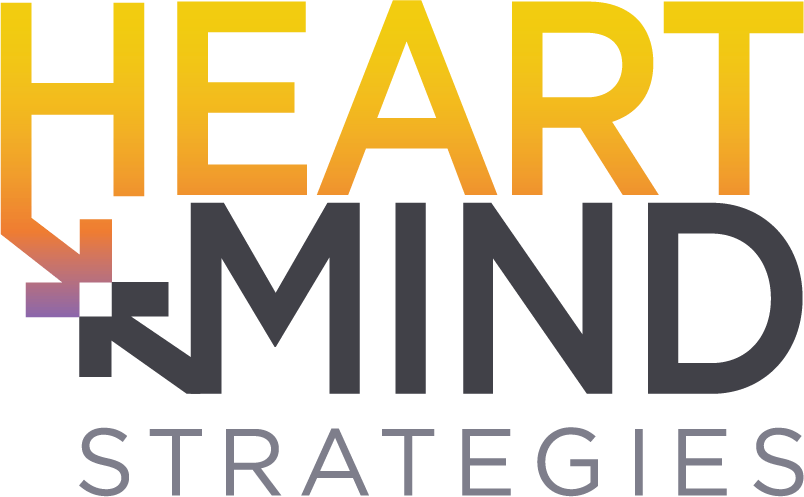One very serious reality unmasked by the COVID-19 pandemic is just how seriously broken some elements of our higher education and skills training systems really are today. Our March 2021 RoundTable session focused on the issues surrounding the widening gap between what higher education in America provides and what the labor market demands.
Pandemic Impact on the Job Market
COVID-19 has led to changes in the labor market that disproportionately impact the education industry and people with lower resources and lower levels of education. The labor market dramatically declined due to COVID-19 but has slowly and consistently grown back. However, the U.S. remains millions short on jobs compared to where it was pre-pandemic, with lower-wage jobs seeing the largest decline compared to middle- and higher-wage jobs.
RELATED: Impact of Pandemic Hits Personal Finances
RELATED: Jobs Report March 2021: Gain of 916,000 as Recovery Sped Up – The New York Times
Jobs requiring less education (no high school degree) were expected to grow over the next decade, but the pandemic has instead created a projected decline. Remote work has become more prominent than it was before; however, jobs that require less education are less likely to be remote compared to jobs that require more education.
Pandemic Impact on Higher Education
Over the years, a perception has grown that higher education has morphed into an industry that caters to those with resources rather than an industry that creates opportunities for all, including disadvantaged populations. Students with the fewest resources and the most significant barriers to learning have been disproportionately impacted by the shift to online instruction after COVID-19. Colleges have become increasingly selective, especially among the Ivy Leagues.
Due to COVID-19, there is a lot of uncertainty around higher education in terms of whether it is even worth pursuing at the moment, especially due to its high and increasing cost. Virtual learning is not perceived to have equal value compared to in-person learning.
RELATED: Higher Education Was Already Ripe for Disruption. Then COVID-19 Happened.

Are 4-Year College Degrees Still the Best Way?
People with no post-secondary education have been hit the hardest by the pandemic, yet there is greater public skepticism about the value of post-secondary education. People with degrees think their education was worth it, and people without degrees are skeptical about the benefits of it. This trend of skepticism has been further accelerated by the pandemic, and we are now seeing a significant shift toward consideration for skills-based credentials versus the traditional four-year degree.
Research shows an almost even split in terms of people who believe the best path forward is a skills-based approach vs. a four-year college degree.
- Nearly half the public feels that the value of a four-year college degree has decreased compared to 10 years ago.
- Only about 1 in 10 Americans believe a four-year degree is now more valuable and the still best path to a career.
- Some people believe a 4-year college degree does not prepare students with the hard and soft skills required to enter the workforce. We see a real disconnect between academic knowledge and what is needed to be successful in a chosen field of work.
Online Learning is Here to Stay
There is an enduring interest in online learning, especially among working adults and individuals with families. Technology advancements have opened the door to new ways of teaching and learning, and higher education is seeing a shift away from more traditional methods as new alternatives arise. However, consideration must be given to developing online models that do not worsen existing inequalities in terms of who has access to technology.

As more educational content is moved online, we are transitioning to a system that promotes on-demand learning (students can learn at their own pace) and customized/student-centered curriculums. Competency-based online degree programs (Bachelor’s or Master’s) can be completed more quickly than a traditional four-year setting.
Some people believe online learning results in a diminished education experience. It is important to consider how to adapt to digital learning while still maintaining the strengths of in-person learning.
Tech companies, like Google, are stepping into education and offering certificate programs that are designed to help people develop job-ready skills and land high-paying jobs in growing industries. These programs offer quality certificates with a cheaper, less time-consuming alternative to degree programs.
RELATED: How Google’s New Career Certificates Could Disrupt the College Degree
Employers Role in Education
Employers should and do play a role in the education space. One-third of Americans say they are going to invest in themselves when it comes to education, and they expect their employers to invest in them as well. Nearly two-thirds (63%) of Americans say employers need to invest more in employee education and training.
They want investments in the form of:
- Financial support (tuition assistance for degrees and certifications)
- Professional development (upskill/reskill, apprenticeship/internships)
- Community support (employees volunteering in local schools, working with higher ed on skill-based curriculum, donations to improve digital connectivity)
We are seeing the private sector provide education and skills training internally (e.g., Google, Amazon, IBM, Apple, etc.) because they know what they need. However, external providers will still play a role – what will that look like?
Expert Recommendations Moving Ahead
All adults, at all stages of life, have many options for higher education and there could not be a more transformative time for the sector to work collaboratively with employers, students, parents, teachers and other influencers to reimagine the future and how to best prepare future talent for success.
Our guest panelists (details below) provided these recommendations as potential developmental steps in the reshaping of how we prepare people for job success.
1. Establish a stronger link between education and the workforce. Higher education should collaborate with employers to consider workforce needs and refine the curriculum based on these needs.
- The focus should be on developing skills (both technical skills and soft skills) and competencies necessary to be successful in the workplace.
- Designing curriculum around workplace needs would help combat the skepticism around the value of higher education and better prepare students for the workforce
- It is important to consider how industries change over time, and so there should be a focus on developing skills that are transferrable across industries.
- Models that offer incentives for higher education based on student workplace placement are being considered.
2. Create a system that is inclusive, accessible, and affordable. Higher education should evaluate their performance on creating a system that is inclusive, accessible, and affordable. If players in the industry fail to achieve this goal, they risk being pushed out by start-ups that enter the education space with more innovative and inclusive options.
- Embrace the idea of online learning as a more permanent transformation in the industry rather than a temporary response to a public health crisis.
- Possible education models include hybrid (part online, part in-person), fully online, and augmented immersive residential (focuses on how online learning can strengthen the traditional model).
- Increase university admissions and focus on creating broader opportunities for the average person.
- Higher education should reconsider its more traditional aspects and evolve with the times/market.
- It is important that institutions are proactive in making these changes rather than waiting for consensus among every type of institution. Some institutions may do just fine without changing, but other institutions may highly benefit from change, and so it is important to fully explore and be open to innovation and new ways of imagining higher education.
- Normalize gap years (there is not consensus on this). Some believe young adults are more likely to return to college and graduate after first deferring their studies. However, other studies have shown this not to be true, especially for lower-income students or students who would be the first in their family to go to college.
- Instructional methods should be aligned with research on how students learn. This especially became critical in 2020 when the pandemic began.
RELATED: Better Late Than Never? Delayed Enrollment in the High School to College Transition
3. Start exposure to higher education options early. To change students’ mindsets so they recognize all higher education opportunities open to them, it is important to think in terms of interests and start exposure at the K-12 level. Think about how students can explore the different pathways related to their interests and think of those interests and skills as something that is built over a person’s life.
4. Update G.E. requirements to include key technical skills and soft skills. In terms of technical and soft skills development, we should get out of the mindset that certain skills apply only to certain people based on their academic/career pathway. It is valuable for everyone to have certain soft skills and technical skills, and the higher education industry would benefit from exploring their role in helping students to develop these skills.
Guest Panelists
Daniel Culbertson, a leading economist at Indeed, set the stage with job demand realities across sector. Indeed is the world’s #1 job site, attracting over 180 million unique visitors per month. Indeed is available in more than 50 countries and in 28 languages, covering 94% of global GDP.
Dr. Nichole Torpey-Saboe is from the Strada Education Network. Strada is “a new kind of social impact organization working to improve lives by forging clearer and more purposeful pathways between education and employment.”
Alana Dunagan is the Director of Higher Education and Workforce Policy at Western Governor’s University (WGU). WGU is a non-profit, online university literally founded by western governors. Most importantly, WGU has proven a very different way to do competency-based higher education and skills-based training programs. WGU is all about helping to “bridge the gap between talent and access to opportunity.”
RELATED STORIES:
A Higher Ed Crisis is a Terrible Thing to Waste, Make Me Smart podcast
Learning from COVID-19, Looking to the Post-Pandemic University
A Post-Pandemic Strategy for U.S. Higher Ed
Professor Scott Galloway: The Great Dispersion and Future of Higher Education
